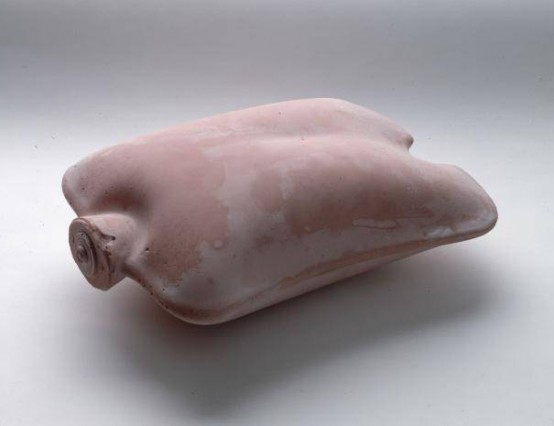The Ilya and Emilia Kabakov exhibition at the Tate Modern depicts the visual culture of life under the soviet regime through a combination of instillations, illustrations, sculptures and a large breadth of work. There work capturing the essence of life in soviet Russia and creates immersive environments generating a mimesis of the atmosphere and culture of the time. There work looks at both the everyday and the conceptual intertwining both while reflection on the Soviet Union, while still securing universality through the messages and metaphors represented.
In this time of purging artists whose work was non-conformist to the soviet regime, the work produced by Ilya and Emilia Kabakov would have been illegal and as such they did not exhibit any of it until the dissolution of the soviet regime in the 1990’s. Their artwork Not everyone will be taken into the future depicts this very issue. A train is pulling away from the station leaving behind the broken, disregarded abstract paintings. This showing how the authority and restraints of those in power in the Soviet Union controlled and shaped the future; those artists who will go on and produce art which will become a part of art history and many others being left behind and forgotten. These artists abandoned to obscurity due to being unfashionable or radical under this political regime.
Another major work in this exhibition being The Man Who Flew to Space from his Apartment. This instillation captures the idea of escapism, possibly representing how constrained artists felt under this regime as though trapped within its confines. The room with a catapult attached to the roof with a hole above in the celling, is closed off from the world with wood covering the entrance forcing viewers to cram together like sardines to see inside. This references to the living conditions in Soviet Russia with extreme cramped conditions; immersing the viewer in this experience
Their work opens up their art as a conversation allowing the viewer to interact with these environments and fully become a part of the art allowing the viewer to dictate the value of the work from how they have experienced it. This work being narrative generating fictional personas for each space and artwork based on the experiences of Ilya and represent his life and memories but depicted as though the stories of another.
The centrepiece of this exhibition being Labyrinth. This piece is highly complex, formed of a twisting corridor, the piece shows pictures of Ilya’s mother and extracts of her biography paired up as almost a eulogy or commemoration to her life. It is so complex and detailed that “you will never be able to read the labyrinths contents in its entirety” in this way it imitates life. So complicated and perplexing that you will never fully comprehend everything. Through this, this very personal memoir to his mother’s life, becomes a universal message for the human condition and struggle we endure to procure knowledge. The artwork of Ilia and Emilia not acting as protest or political work in any from; It acts as a forum through which they express their experiences, life and to provoke discussion and conversation.









This is a great piece! Did you manage to get other photos?